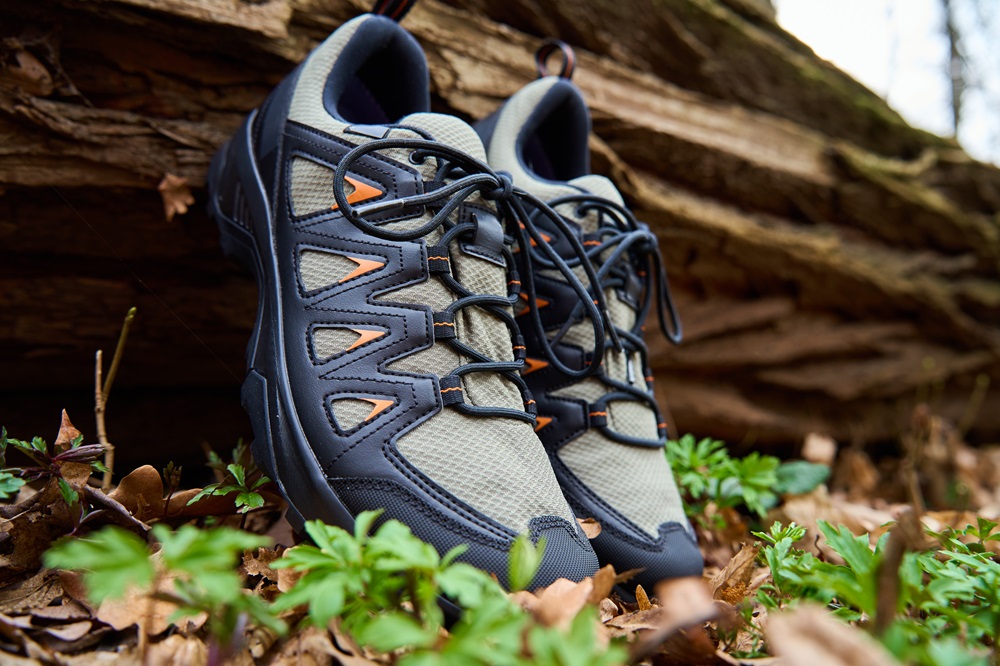Do your heels perpetually lose grip and slide up when wearing mountain climbing boots on hikes?
This frustrating sensation, known as heel lift, can make walks excruciating. Luckily, we will outline 10 practical solutions to simply resolve heel lift troubles in climbing boots once and for all.
Test Different Socks First
- Try thicker wool hiking socks that hug your feet without compressing them. The extra cushioning stops the foot from jostling inside the boot.
- Sport-specific socks with targeted compression zones also discourage upward heel motion.
- Wearing multiple layers of thin socks achieves a cozy fit as well.
“Adding the right socks brought my heels under control. I can finally focus on the journey instead of adjusting my boots every 5 minutes!” – Steve, Avid Outdoorsman
Use Aftermarket Insoles for More Support
Customizable insoles let you tweak ankle and heel stability in existing boots.
Benefits include:
- Multiple thickness options to take up excess space
- Additional cushioning avoids heels detaching from the base
- Increased arch support and heel cup depth for a locked-in feel
| Insole Type | Cost | Pros | Cons |
| Store-Bought | $15-$50 | Cheap, Decent Quality | Limited Adjustability |
| Custom Molded | $80-$250 | Perfectly Matches Feet | Expensive, Professional Fitting Required |
“Getting custom insoles revolutionized my hiking. No more heel slippage, hot spots, or foot fatigue!” Kim W.
Use Boot Fitting Tools
Boot fitters have an arsenal of instruments to optimize slippage and discomfort issues:
- Heel Locks – Rubber/silicone grips clasping heels in position
- Fitting Foams/C-Pads – Space fillers to stop heels detaching
- Wedges – Angled risers gluing heels to boot bottoms
- Blister Blocks – Gel pads covering friction hotspots
Visiting a quality boot fitter provides affordable and convenient tweaks guaranteeing pleasurable hikes without bothersome heel lift occurrence.
“A 5 minute appointment with my boot fitter totally eliminated the heel slide! Why didn’t I do this earlier?” Dan, Keen Trekker
Lace Boots Correctly
Properly lacing up boots secures heels and stops lift:
- Relax laces fully before tightening
- Firmly tug laces closest to toes
- Lightly tighten upper hooks over ankles
- Finish with strong heel lock loop
Correct lace tension couples heels to the base while side loops prevent lateral slippage.
“I can’t believe I was lacing my boots wrong for so long! Adjusting my technique kept heels locked down all day long.” – Lauren, Casual Mountaineer
Use Heel Lock Lacing
Threading laces in a heel lock pattern is a game changer:
- Completely loosen laces
- Run lace through lower hooks as usual
- At second to last hook, feed lace through first instead and cross over
- Feed lace through last hook regularly
- Tighten lacing as normal
This traps heels inside boots for certified slip and movement prevention.
Try Relative Lacing
Relative lacing shifts pressure away from heels:
- Fully relax laces
- At bottom hook, feed lace through opposite side’s hook
- Continue alternating sides up entire boot
- Snugly tighten to tug heels downward into footbeds
The zig-zagging lace path pulls heels into boot bodies while isolating them from vertical pressure.
Use External Heel Locks
Heel locks are affordable accessories stopping lift occurrence:
- Lightweight rubber/silicone construction
- Adhesive pads stick directly to heels
- Bottom grips attach to boot insides
- Different sizes suit any foot

Use Boot Fitting Balms
Sticky balms act like glue binding heels to boot interiors:
- Apply thin layer to heels/ankles pre-hike
- The tac prevents vertical heel movement
- Reapply balm whenever slippage resumes
Swap Insoles for Heel Lock Variety
Trading generic insoles for heel lock versions inhibits rising:
- Deep heel cups trap feet inside
- Customizable arch fits avoid excess room
- Shock absorbing heels stick to boot base
- Low cost and easy to install
Heel lock insoles addresses slipping without buying new boots.
“I swapped my flat insoles for heel lock ones – best $20 I ever spent. No more heel scare!” Sam W.
Wear Two Pairs of Socks
Doubling up on snug socks compresses feet to prevent ascent:
- Thin liner socks slickly wick sweat
- Outer wool socks insulate and pad
- The compression fills space stopping motion
- Provides warmer, drier feet too!
“I hardly get cold heels or heel lift wearing two pairs of socks in my boots now – problem solved!” Jess, Avid Alpine Hiker
Get Properly Fitted Boots
Perfectly sized boots won’t slide to begin with:
- Visit specialty outdoor stores
- Employee uses 3D scanning for precision fittings
- Recommends ideal boot model and size
- Prevents all discomfort issues
Though pricier than random online purchases, tailored boots guarantee comfortable non-slipping trekking sans accessories or mods.”Getting properly measured and fitted for boots revolutionized my hikes – it was absolutely worth the investment!” Luis M.

